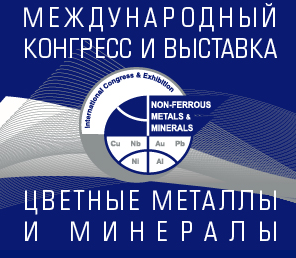ДЕФОРМАЦИОННЫЕ СВОЙСТВА ГИДРОГЕЛЕВЫХ КОМПОЗИТОВ Α-ЛИПОЕВОЙ КИСЛОТЫ С КОЛЛОИДНЫМ ДИОКСИДОМ КРЕМНИЯ
Аннотация
Гидрогели широко используются в качестве основы для мягких лекарственных форм и косметических композиций (мазей, кремов, гелей, масок, дермальных филлеров и т.д.). Деформационные свойства указанных продуктов являются важнейшими с точки зрения удобства и безопасности их применения, а также оптимизации процесса их производства. В данной работе неорганические гидрогели диоксида кремния рассматриваются в качестве перспективной основы для разработки новых мягких лекарственных форм и продуктов для косметологии. Были синтезированы гидрогелевые композиты диоксида кремния с α-липоевой кислотой, которая является известным мощным антиоксидантом и применяется для лечения различных заболеваний кожи. Кроме того, она оказывает омолаживающее действие на кожу. Учитывая указанное потенциальное применение гидрогелей и способ их введения (трансдермальное, инъекционное), они имели рН 6,6–7,4. Чистые гидрогели диоксида кремния и их композиты с α-липоевой кислотой были синтезированы двухступенчатым золь-гель методом. С помощью метода оптической микроскопии показано, что они имеют высоко пористую поверхность. Определены деформационные свойства синтезированных гидрогелей при сжатии, растяжении и сдвиге. Показано, что синтезированные гидрогели обладают определенной эластичностью при аксиальном сжатии, тиксотропией, проявляют псевдопластичность. Установлены эффекты условий синтеза (концентрации катализатора золеобразования диоксида кремния, количества лекарственного вещества) на деформационные свойства композитов. Эффекты объяснены с точки зрения влияния указанных факторов на прочность трехмерного каркаса диоксида кремния гидрогелевых материалов. Обнаруженные деформационные свойства гидрогелей диоксида кремния делают их перспективными для разработки новых мягких лекарственных форм для топического применения.
Для цитирования:
Долинина Е.С., Парфенюк Е.В. Деформационные свойства гидрогелевых композитов α-липоевой кислоты с коллоидным диоксидом кремния. Изв. вузов. Химия и хим. технология. 2022. Т. 65. Вып. 8. С. 55-61. DOI: 10.6060/ivkkt.20226508.6671.
Литература
Wang K., Hao Y., Wang Y., Chen J., Mao L., Deng Y., Chen J., Yuan S., Zhang T., Ren J. and Liao W. Func-tional Hydrogels and Their Application in Drug. Article ID 3160732. 14 p. DOI: 10.1155/2019/3160732.
Narayanaswamy R. and Torchilin V.P. Hydrogels and Their Applications in Targeted Drug Delivery. Molecules, 2019. V. 24. P. 603. DOI:10.3390/molecules24030603.
Teptereva G.A., Pakhomov S.I., Chetvertneva I.A., Karimov E.H., Egorov M.P., Movsumzade E.M., Evstigneev E.I., Vasiliev A.V., Sevastyanova M.V., Voloshin A.I. Re-newable natural raw materials. Structure, properties, application prospects. ChemChemTech [Izv. Vyssh. Uchebn. Zaved. Khim. Khim. Tekhnol] 2021. V. 64. N 9. P. 5-122 DOI: 10.6060/ivkkt.20216409.6465 (in Russian).
Maslova N.V., Sukhanov P.T., Kochetova Z.Y., Zmeev A.V. Investigation of the kinetics of hydrogel swellingide based on acrylamide copolymers and potassium (sodium) acrylate. ChemChemTech [Izv. Vyssh. Uchebn. Zaved. Khim. Khim. Tekhnol]. 2022. V. 65. N 3. P. 27-34. DOI:10.6060/ivkkt.20226503.6498 (in Russian).
Weetall H.H. Storage stability of water-insoluble enzymes covalently coupled to organic and inorganic carriers. Biochem. Biophys. Acta. 1970. V. 212. P. 1-7. DOI: 10.1016/0005-2744(70)90171-3.
Welch K, Latifzada M.A., Frykstrand S., and Strшmme M. Investigation of the Antibacterial Effect of Mesoporous Magnesium Carbonate. ASC Omega. 2016. V. 1. P. 907-914. DOI:10.1021/acsomega.6b00124.
Lee W.J., Eun D.H., Kim S.M., Kim J.Y., Jang Y.H., and Lee S.-J. Anti-Inflammatory and Antioxidative Effects of Al-pha Lipoic Acid on Cu ltured Human Sebocytes. Ann Derma-tol. 2019. V. 31. N. 1. P. 84-87. DOI: 10.5021/ad.2019.31.1.84.
Venkatraman M.S., Chittiboyina A., Meingassner J., Ho C.I., Varani J., Ellis C.N., Avery M.A., Pershadsingh H.A., Kurtz T.W., Benson S.C. a-Lipoic acid-based PPARg agonists for treating inflammatory skin diseases. Arch. Der-matol. Res. 2004. V. 296. P. 97–104. DOI 10.1007/s00403-004-0480-5.
Perricone N.V. Topical 5% Alpha Lipoic Acid Cream in the Treatment of Cutaneous Rhytids. Aesth. Surg. J. 2000. V.20. N 3. P. 218-222. DOI:10.1016/S1090-820X(00)70020-3.
Tsuji-Naito K., Ishikura S., Akagawa M., Saeki H. α-Lipoic Acid Induces Collagen Biosynthesis Involving Prolyl Hydroxylase Expression via Activation of TGF-β-Smad Signaling in Human Dermal Fibroblasts. Connect. Tiss. Res. 2010. V. 51. N 5. P. 378-387. DOI: 10.3109/03008200903486188.
Pagano C., Calarco P., Ceccarini M.R., Beccari T., Ricci M. and Perioli L. Development and Characterization of New Topical Hydrogels Based on Alpha Lipoic Acid—Hydrotalcite Hybrids. Cosmetics. 2019. V. 6. P. 35. DOI:10.3390/cosmetics6020035.
Danks A.E., Hallb S.R. and Schnepp Z. The evolution of ‘sol–gel’ chemistry as a technique for materials synthesis. Mater. Horiz. 2016. V. 3. P. 91-112. DOI: 10.1039/c5mh00260e.
Bourebrab M.A., Oben D.T., Durand G.G., Taylor P.G., Bruce J.I., Bassindale A.R., Taylor A. Influence of the ini-tial chemical conditions on the rational design of silica particles. J. Sol-Gel Sci. Technol. 2018. V. 88. P. 430–441. DOI: 10.1007/s10971-018-4821-9.
Cao X.J., Cummins H.Z. and Morris J.F. Structural and rheological evolution of silica nanoparticle gels. Soft Matter. 2010. V. 6. P. 5425–5433. DOI:10.1039/C0SM00433B.
Ahmed N.B., Ronsin O., Mouton L., Sicard C., Yeґpreґmian C., Baumberger T., Brayner R. and Coradin T. The physics and chemistry of silicain-silicates nano-composite hydrogels and their phycocompatibility. J. Mater. Chem. B. 2017. 5. P. 2931-2940. DOI: 10.1039/c7tb00341b.
Serban B.A., Stipe K.T., Alverson J.B., Johnston E.R., Priestley N.D., Serban M.A. A Controlled Antibiotic Re-lease System for the Development of Single-Application Otitis Externa Therapeutics. Gels. 2017. V. 3. P. 19. DOI: 10.3390/gels3020019.
Serban B.A., Barrett-Catton E., Serban M.A. Tetraethyl Orthosilicate-Based Hydrogels for Drug Delivery—Effects of Their Nanoparticulate Structure on Release Properties. Gels. 2020. V. 6. P. 38. DOI: 10.3390/gels6040038.
Dolinina E.S., Parfenyuk E.V. Silica Hydrogels as a Basis of Novel Soft Dosage Forms and Cosmetic Compositions. Rus. J. Inorg. Chem. [Zhurnal Neorganicheskoi Khimii] 2022. V. 67. Р. 401–407. DOI: 10.31857/S0044457X22030060.
Davydova O.I., Kraev A.S., Redozubov A.A., Trusova T.A., Agafonov A.V. Effect of Polydimethylsiloxane Viscos-ity on the Electrorheological Activity of Dispersions Based on It. Russ. J. Phys. Chem. 1016. V. 90. P. 1269-1273. DOI: 10.1134/S0036024416060054.
Baumert C., Garrecht H. Minimization of the Influence of Shear-Induced Particle Migration in Determining the Rheological Characteristics of Self-Compacting Mortars and Concretes. Materials. 2020. V. 13. P. 1542 DOI: 10.3390/ma13071542.
Irfan M., Shah L., Khan A.S., Farooq M., Ullah M., Ismail M. Formulation of zwitter-ionic terpolymeric hydrogels and their comprehensive rheological investigation. J. Disper. Sci. Technol. 2022. DOI:10.1080/01932691.2021.2021090.
Rao M.A. Rheology of Fluid and Semisolid Foods. Principles and Applications. Springer. 2007. P. 28-33.
Dokić L., Dapčević T., Krstonošić V., Dokić P., Hadnadev M. Rheological characterization of corn starch isolated by alkali method. Food Hydrocolloid. 2010. V. 24. P. 172–177. DOI: 10.1016/j.foodhyd.2009.09.002.
Richa, Choudhury A.R. pH mediated rheological modulation of chitosan hydrogels. Int. J. Biol. Macromol. 2020. V. 156. P. 591-597. DOI: 10.1016/j.ijbiomac.2020.04.049.
Spiridon L., Andrei L.-M., Anghel N., Dinu M.V., Ciubo-taru B.-L. Development and Characterization of Novel Cellulose Composites Obtained in 1-Ethyl-3-methylimidazolium Chloride Used as Drug Delivery Systems. Polymers. 2021. V. 13. P. 2176. DOI:10.3390/polym13132176.
Ashraf J.M., Nayfeh L., Nayfe A. Mechanical characterization and optical microscopy of homemade slime and the effect of some common household products. Sci. Rep. 2022. V. 12. P. 3953. DOI:10.1038/s41598-022-07949-z.
Molliard S.G., Albert S., Mondon K. Key importance of compression properties in the biophysical characteristics of hyaluronic acid softtissue fillers. J. Mech. Behav. Biomed. Mater. 2016. V. 61. P. 290-298. DOI: 10.1016/j.jmbbm.2016.04.001 2016.
Chen D.T.N., Wen Q., Janmey P.A., Crocker J.C., and Yodh A.G. Rheology of Soft Materials. Ann. Rev. Condens. Matter Phys. 2010. V. 1. P. 301–22. DOI:10.1146/annurev-conmatphys-070909-104120.
Islam M.T., Rodrґıguez-Hornedo N., Ciotti S., Ackermann C. Rheological Characterization of Topical Carbomer Gels Neutralized to Different pH. Pharm. Res. 2004. V. 21. P. 1192-1199. DOI: 10.1023/b:pham.0000033006.11619.07.
Moskalova K., Lyashenko T. and Aniskin A. Modelling the Relations of Rheological Characteristics with Composition of Plaster Mortar. Materials (Basel). 2022. V. 15. P. 371. DOI: 10.3390/ma15010371.
Larsson M., Duffy J. An Overview of Measurement Techniques for Determination of Yield Stress. Ann Trans Nord Rheol. 2013. V. 21. P. 125-138.
Upadhyay R.V., Choi S.-B. Modeling, measurements and validation of magnetic field dependent flow behavior of magnetorheological fluids; static and dynamic yield stress. Smart Mater. Struct. 2021. V. 30. P. 117002. DOI:10.1088/1361-665X/ac2ba8.
Lee C.H., Moturi V., Lee Y. Thixotropic property in pharmaceutical formulations. J. Control. Release. 2009. V. 136. P. 88–98. DOI:10.1016/j.jconrel.2009.02.013.
Gharaie S.S., Dabiri S.M.H., Akbari M. Smart Shear-Thinning Hydrogels as Injectable Drug Delivery Systems. Polymers. 2018. V. 10. P.1317. DOI:10.3390/polym10121317.
Kwak M.-S., Ahn H.-J., Song K.-W. Rheological investiga-tion of bo dy cream and body lotion in actual application conditions. Korea-Australia Rheol. J. 2015. V. 27. N 3. P. 241-251. DOI: 10.1007/s13367-015-0024-x.
Huang N. Rheological Characterization of Pharmaceutical and Cosmetic Formulations for Cutaneous Applications. Cur. Pharm. Design. 2019. V. 25. P. 2349-2363. DOI: 10.2174/1381612825666190716110919.



















